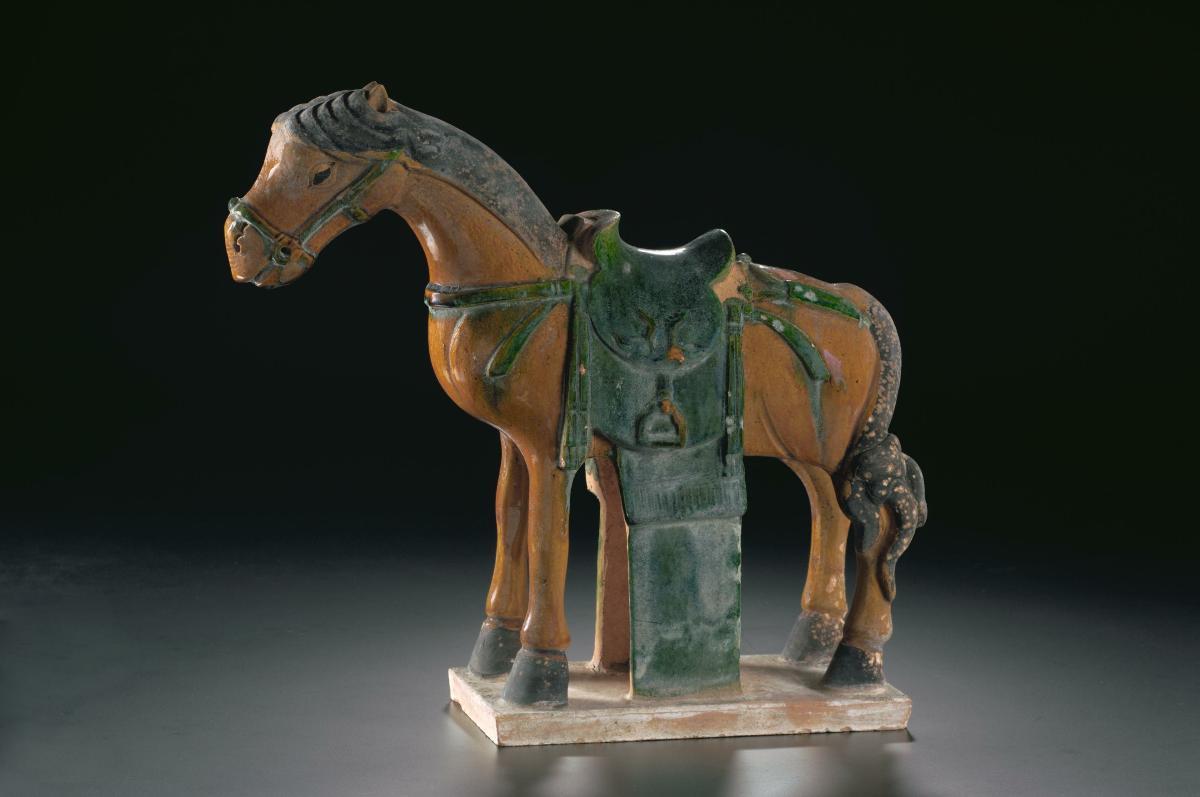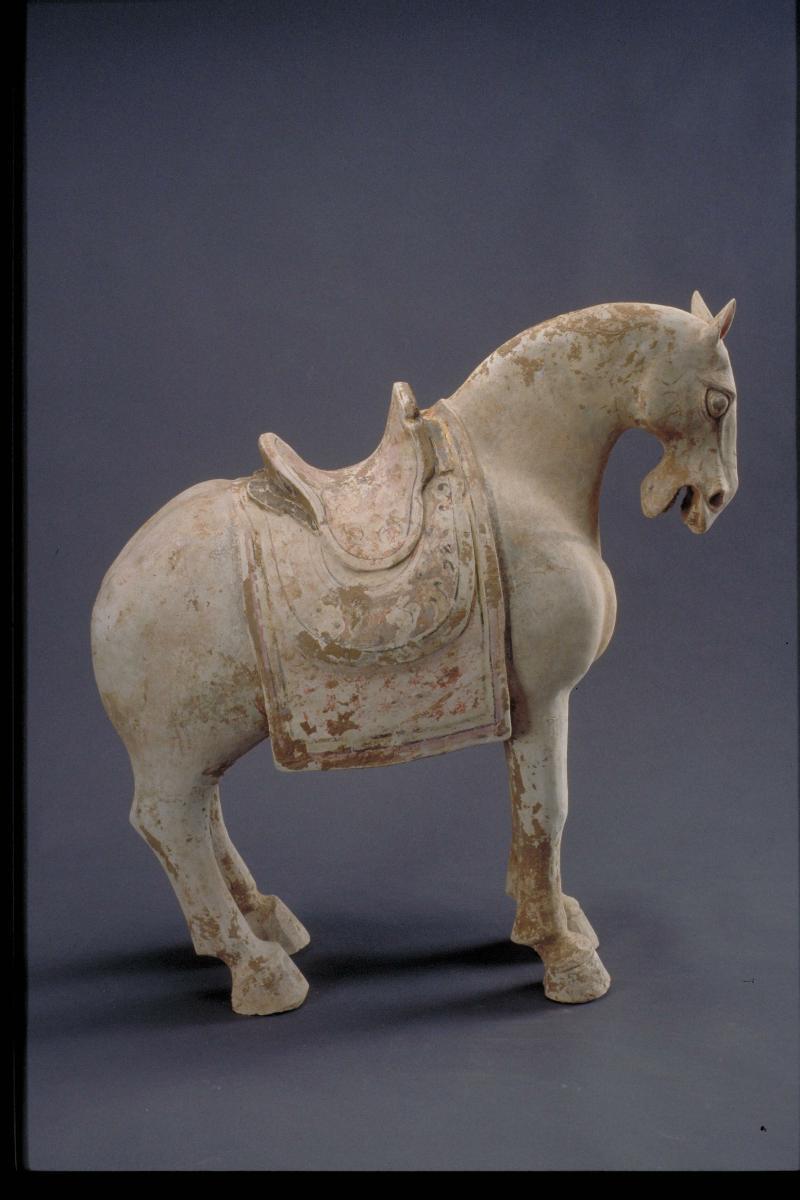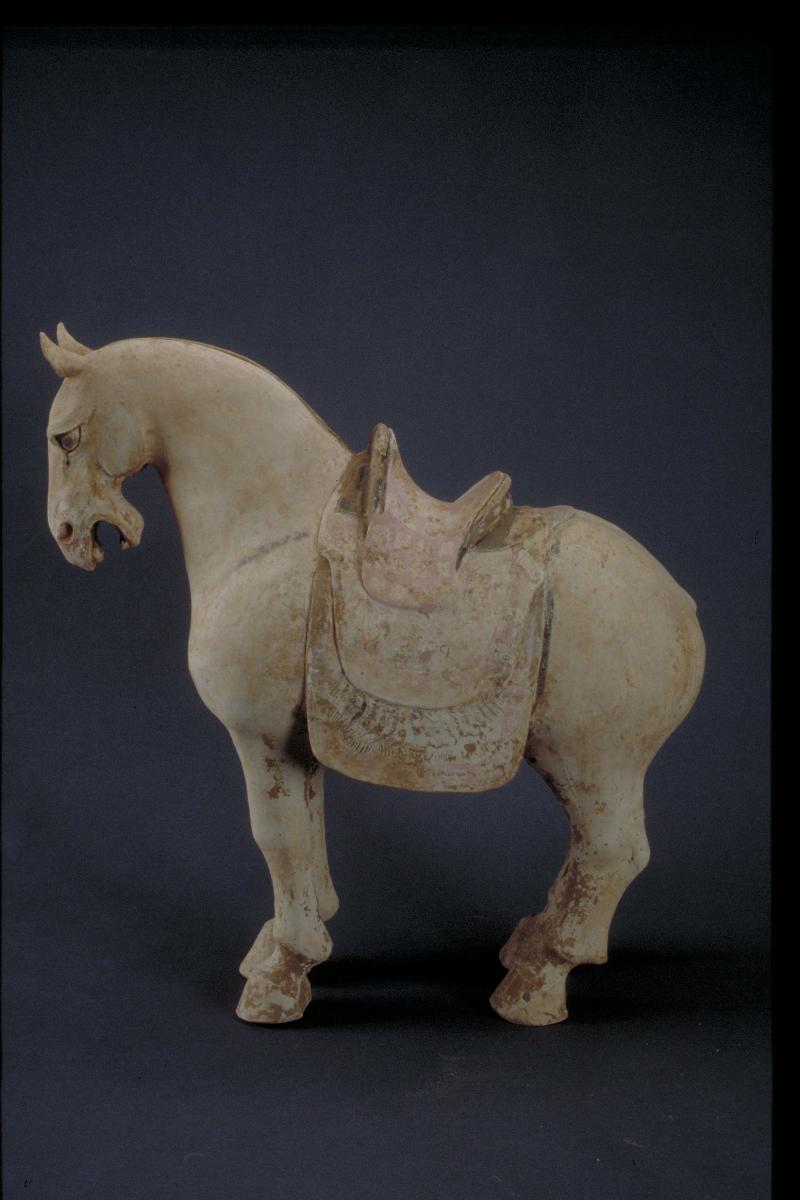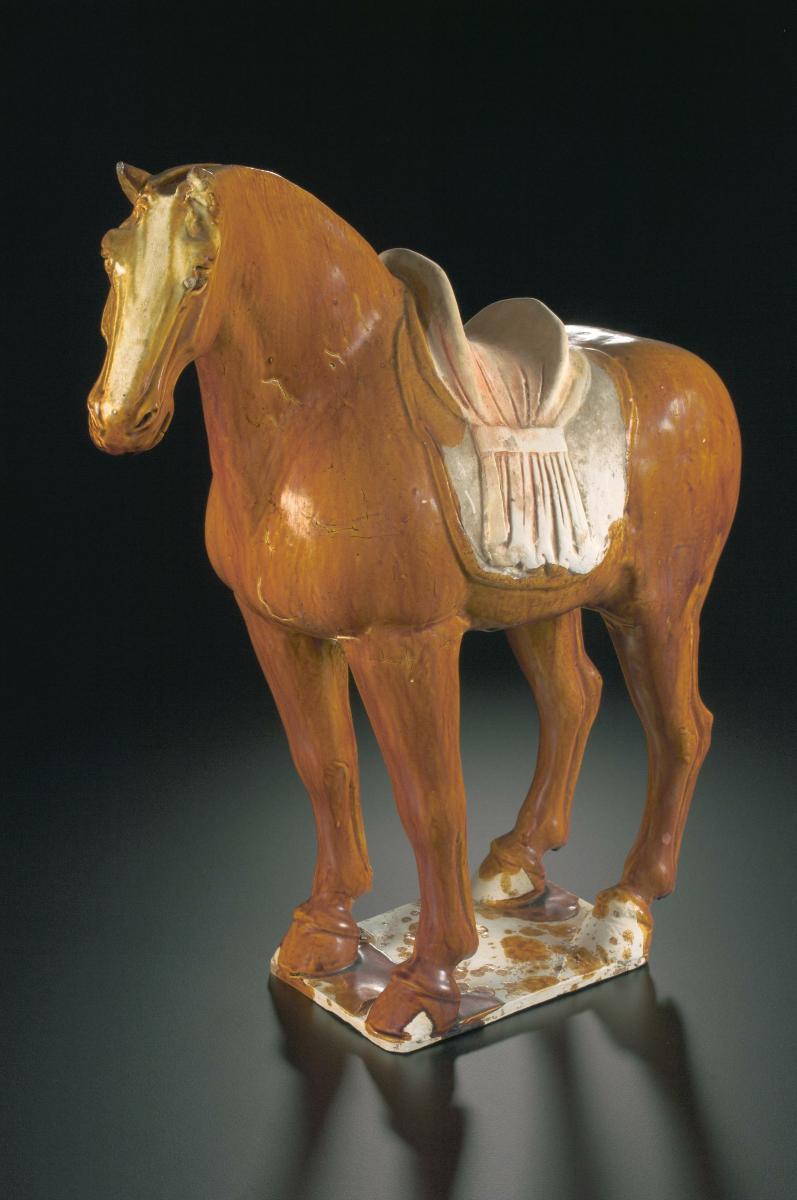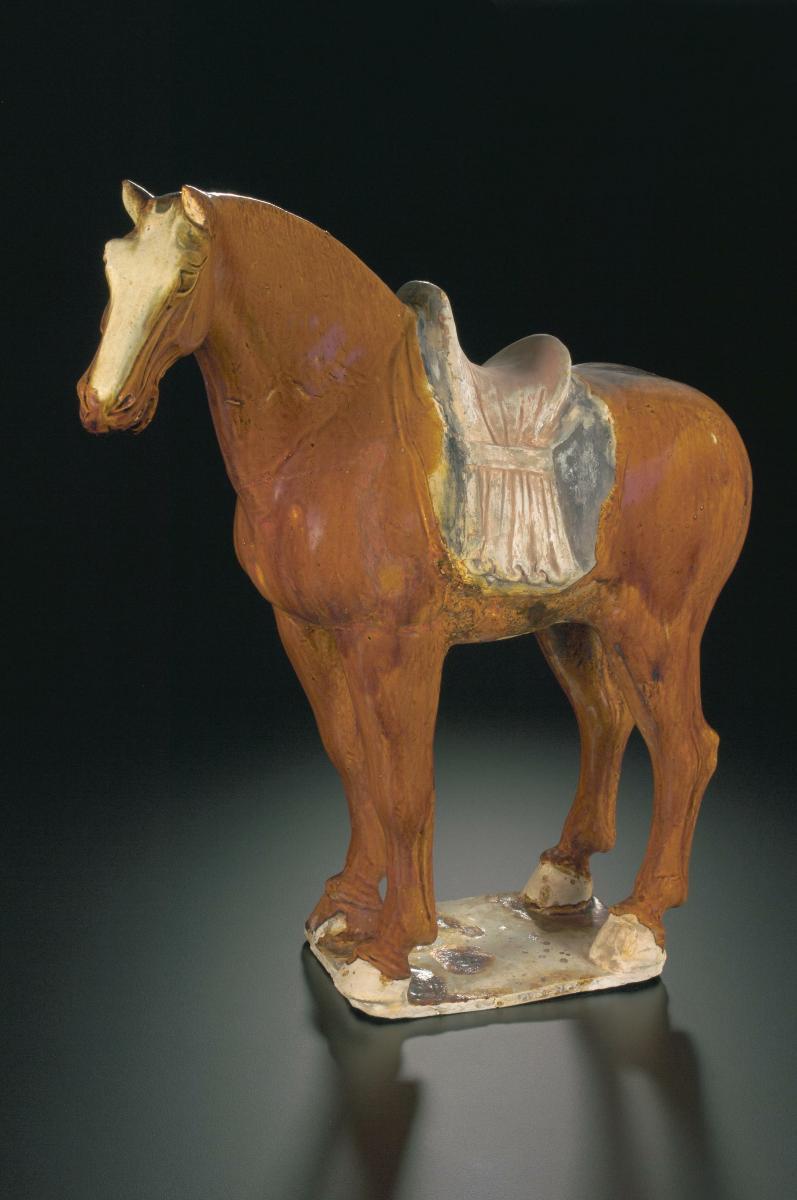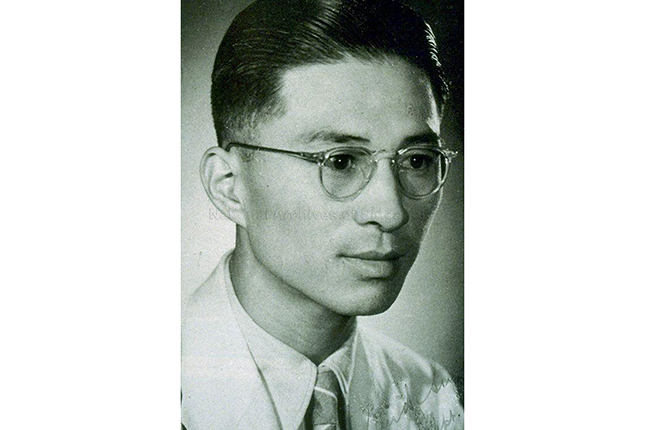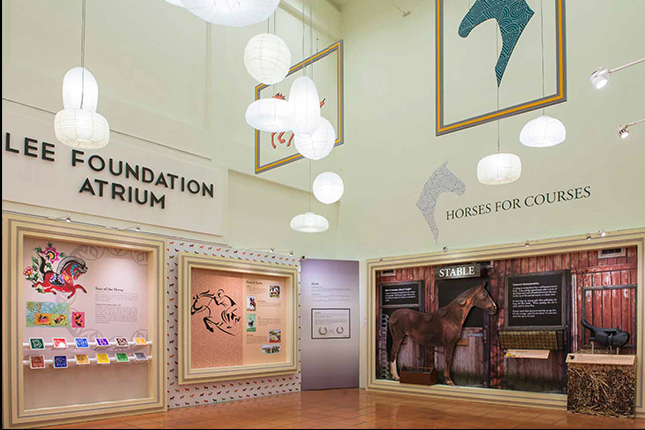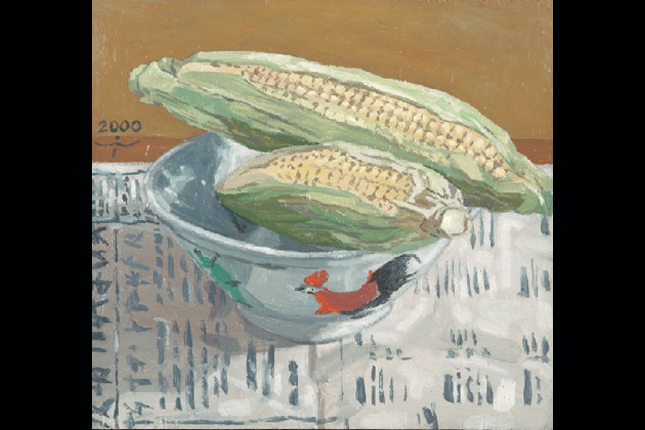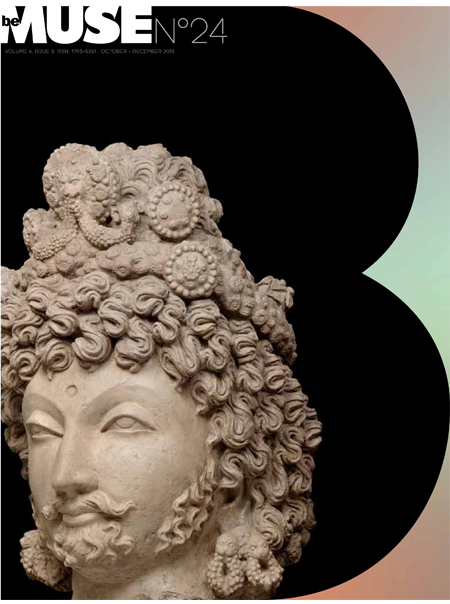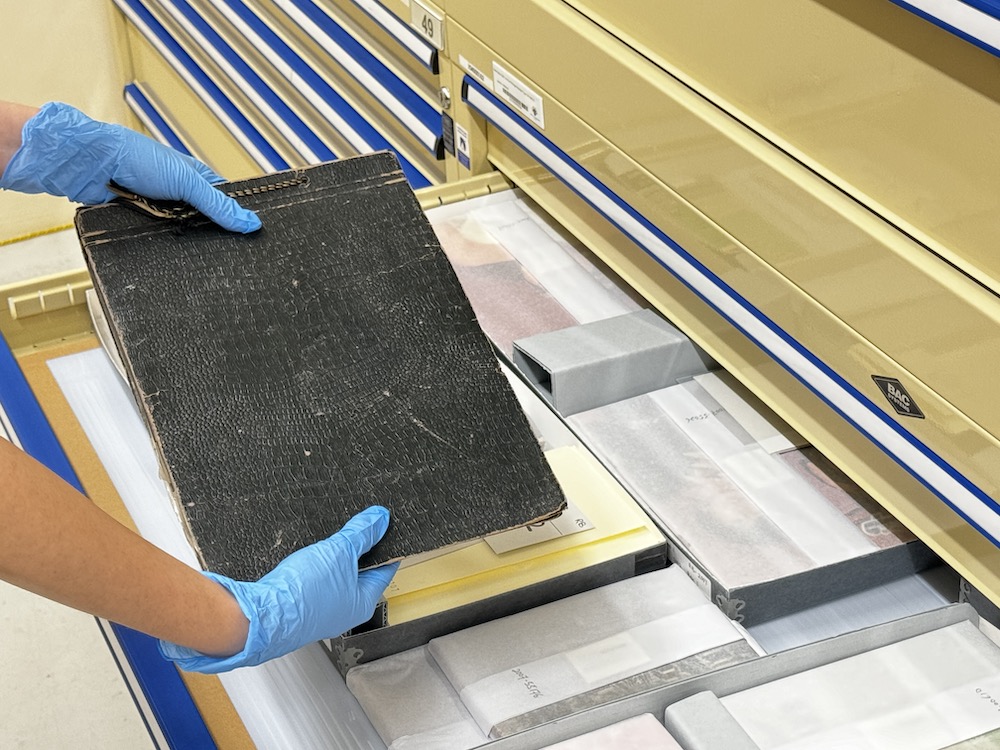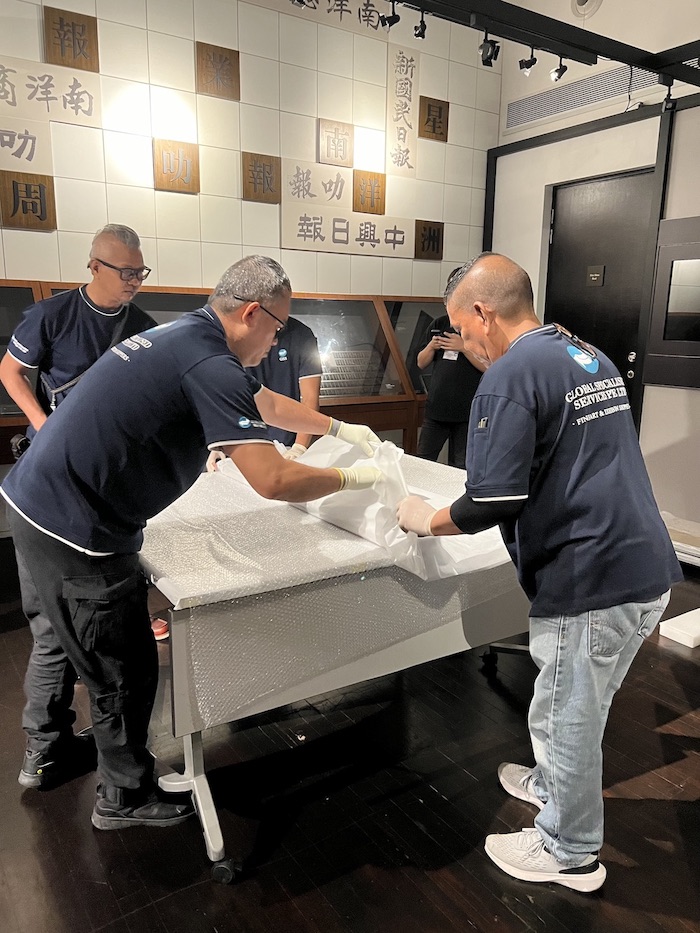This figure of a horse with a saddle has been painted with a ‘sancai’ (three-colour) glaze of brown, black and green. It was used as a burial ware during the Ming dynasty (1368-1644). The importance of horses to the Chinese ruling class can be seen in the large numbers of pottery sculptures that have been found in Chinese tombs since the Han dynasty (206 BCE-220 CE). The custom of making ‘mingqi’ or burial wares was an ancient one. It is thought these wares were necessary for the deceased in the next world. Elaborate groups of burial wares were also a display of wealth and social status.This figure would have been buried in the tomb of a man of status and wealth as the items that were buried were a reflection of the way he lived. It also reflects a desire to continue this comfortable way of life in the afterlife by burying models of his servants and horses with him.




